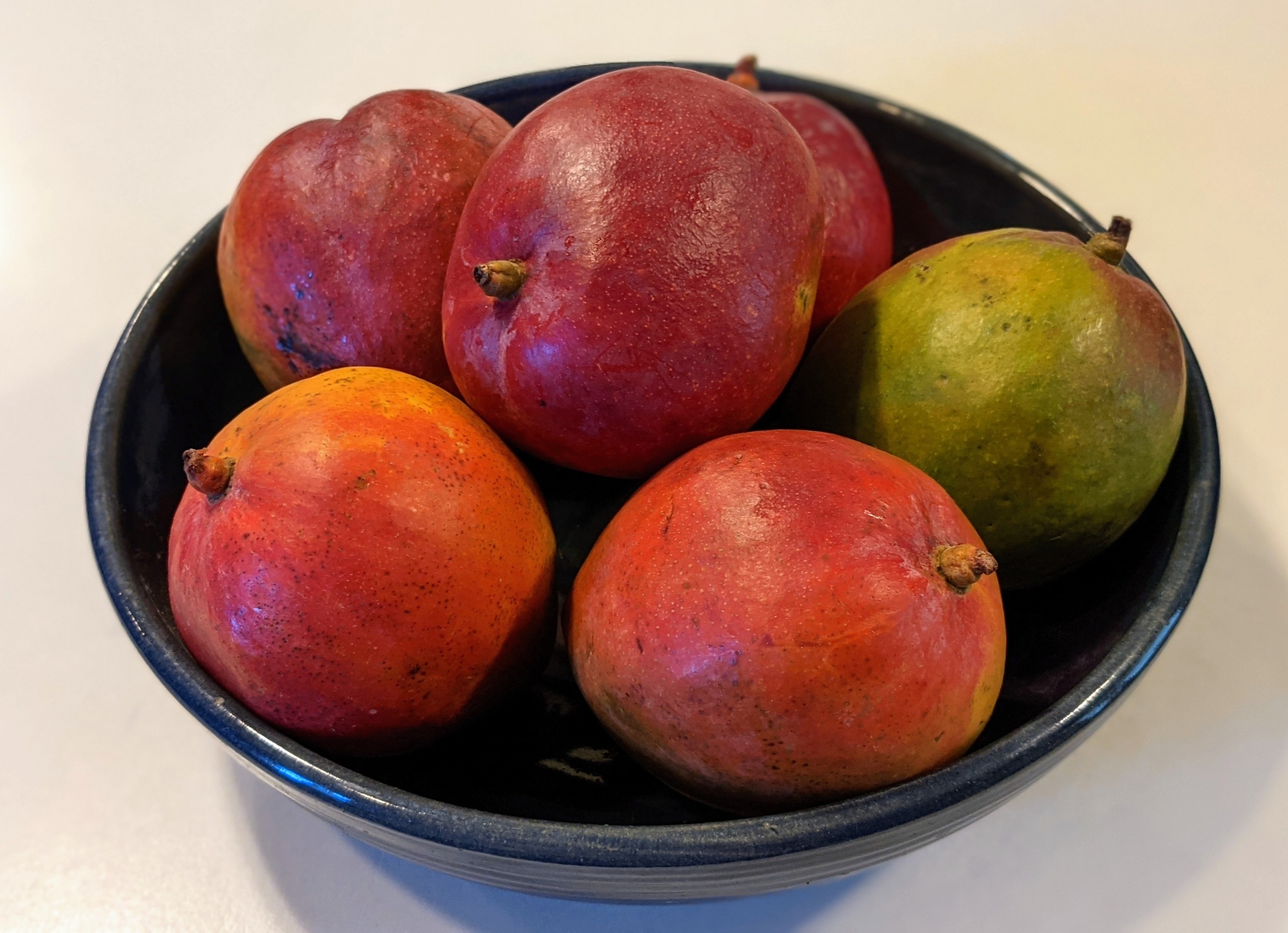
Ah, the beauty of the mango: a plump orb that transitions from bright green to shades of orange, and when ripe, deep red. And this eye-catching fruit isn’t just pretty – it has an amazing, incredibly sweet, yet bright, flavor. With something that tastes this good right out of the peel, I just had to find out if that delightfulness would translate to wine!
My search for mango wine recipes leads me to conclude that most winemakers prefer to use mango juice (nectar) rather than fresh mango. My guess is that there is more predictability when using juice than with the flesh, but I had confidence that a solid technique could render the mango fit for making great wine.
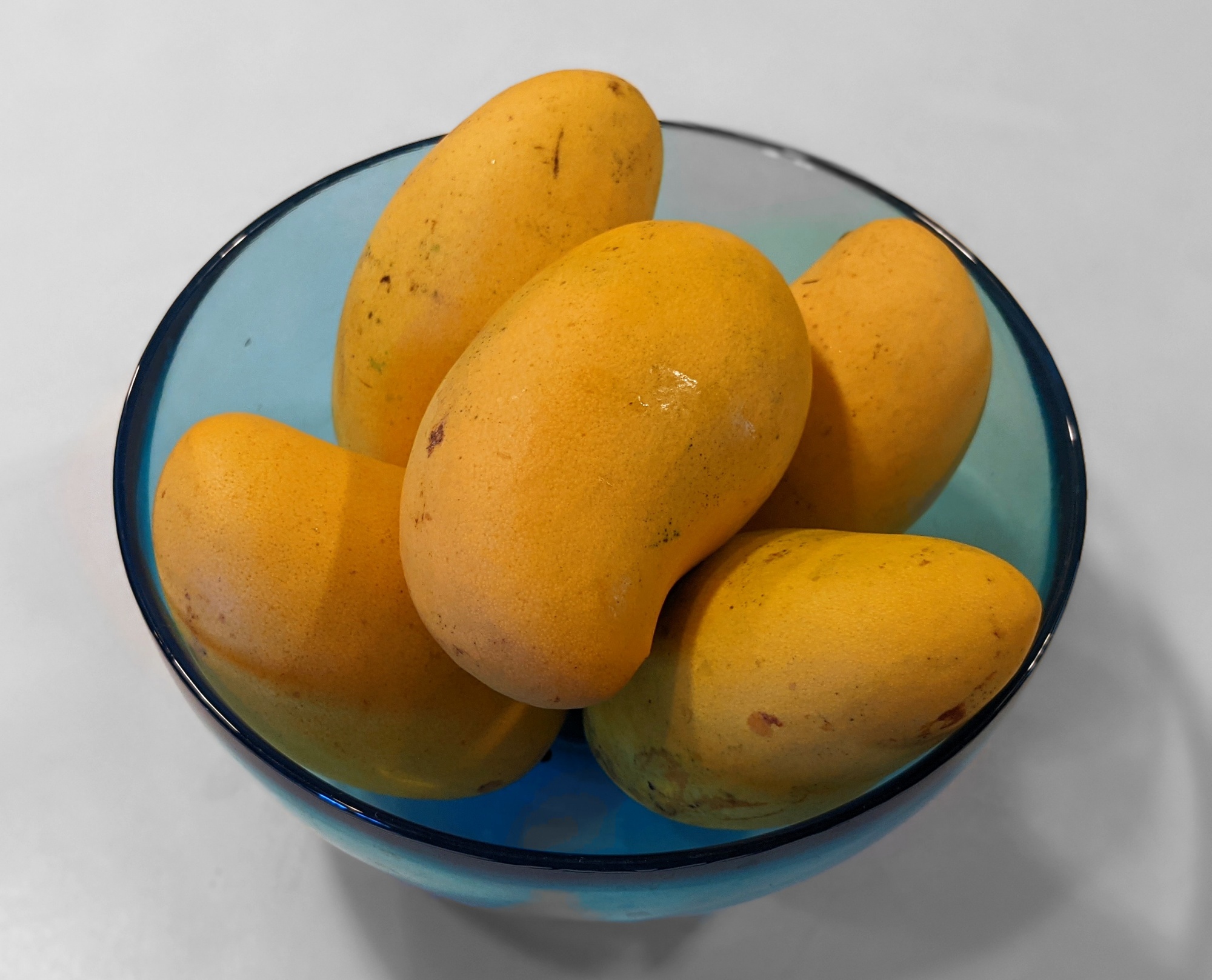
I know that the more surface exposure fruit has to the fermenting liquid, the more flavor it imparts; on the other hand, pureeing mango would result in a thick liquid that would be very difficult to strain out of the must. Balancing the two simply required chopping the mango into small pieces for lots of exposure, but allowing easy removal when moving the must into the secondary fermentor. (While the mango did break down during the initial ferment, it formed a solid cap, which made it simple to strain out.)
But first things first: after peeling and chopping up the mango (enjoying its wonderful fragrance while doing so), I placed it in the primary fermentor, along with the water, sugar, apple juice, (winemaking) acid blend, pectic enzyme, yeast nutrient, and tannin. Last but not least, I pitched the yeast.
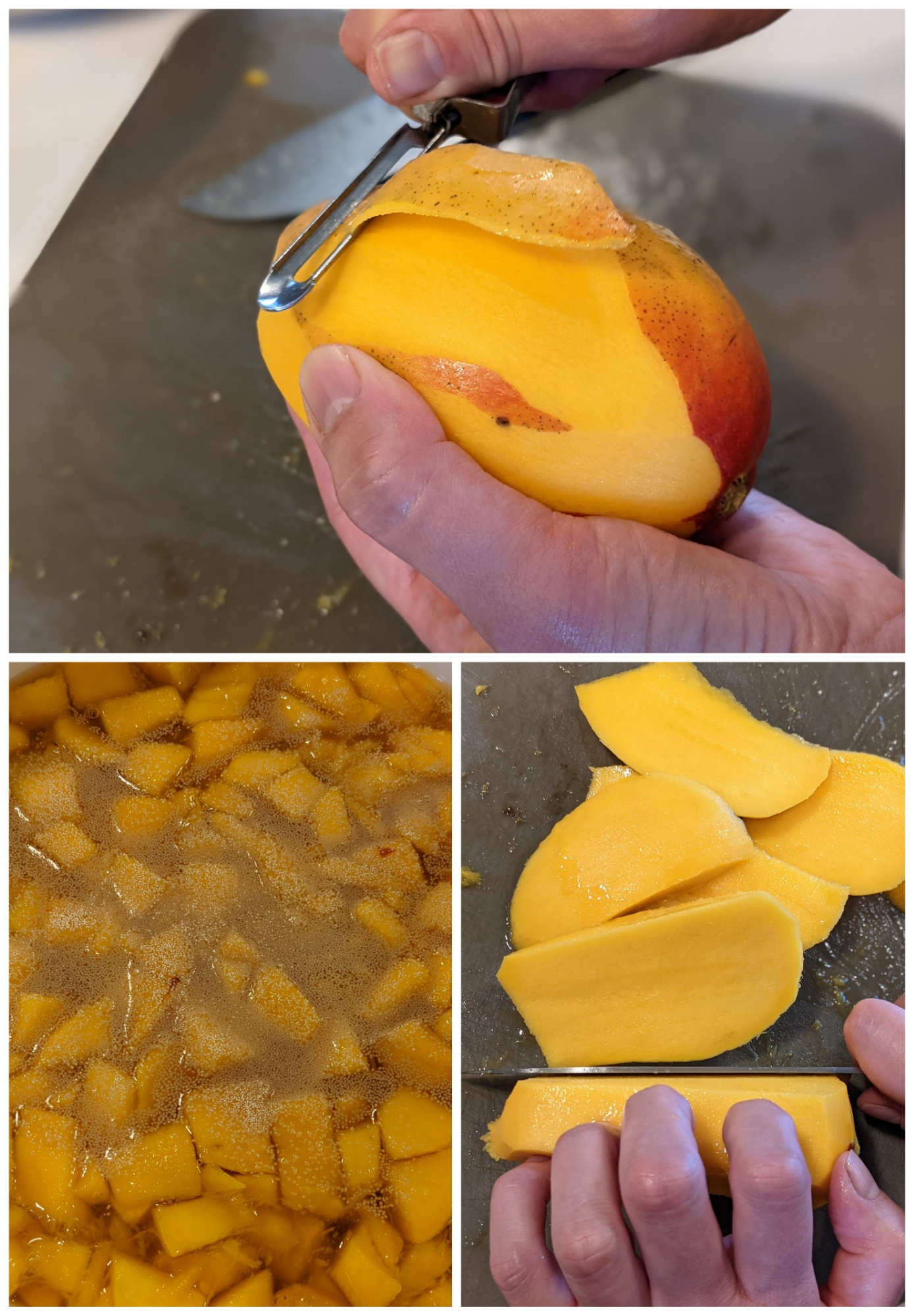
After about five days, stirring daily, I transferred the wine to a secondary fermentor to finish up. The mango had been broken down during the fermentation process, so carefully straining out the pulp was important.
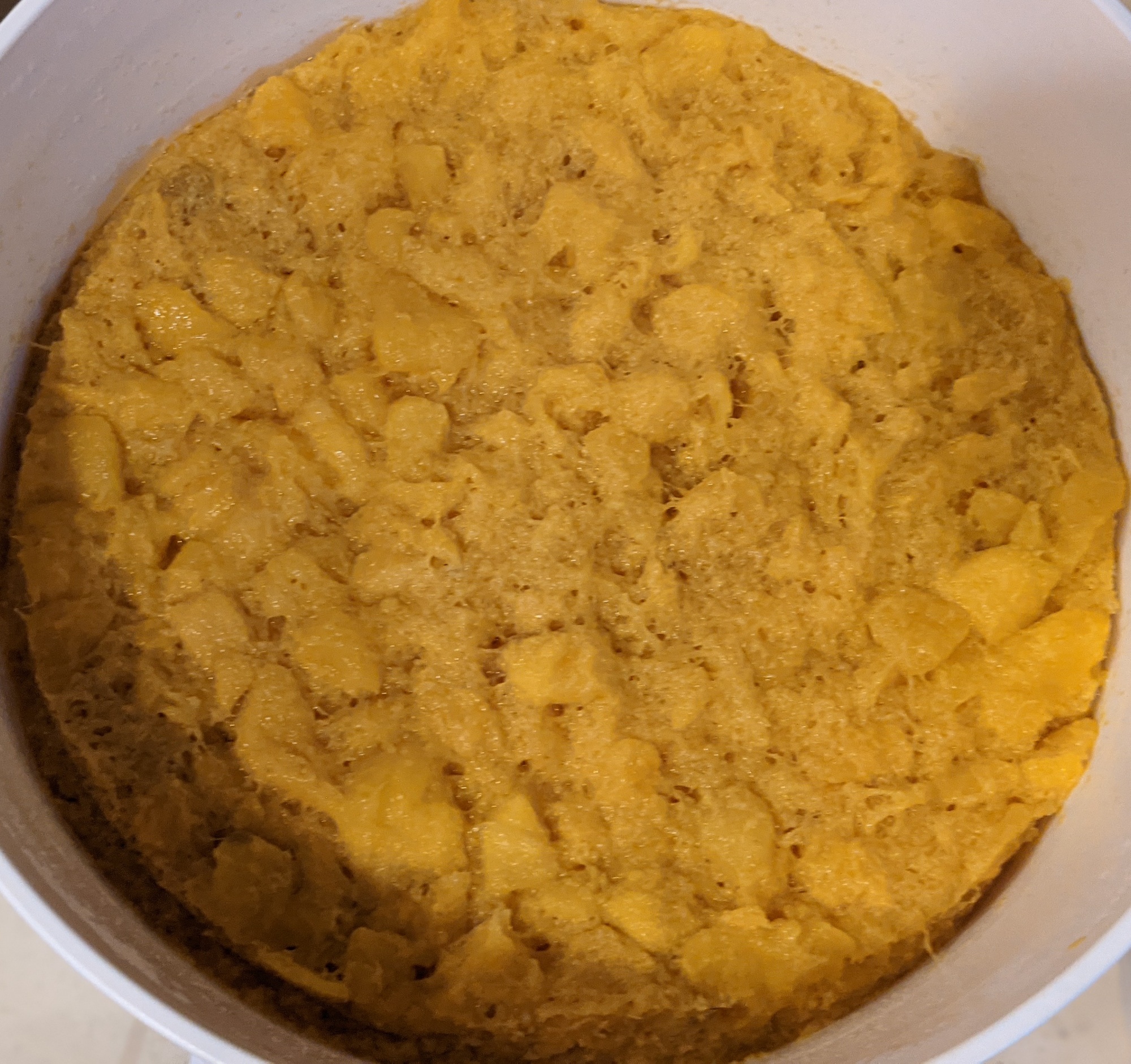
At initial transfer, the nascent wine still had a rich fruity aroma overlaid with the tang of fermentation. Unsurprisingly, the color was a milky yellow, but as with many fruit wines, held the promise of clearing to a nice (in this case, golden) hue. There was a bit of residual mango sludge that rose to the top of the carboy, but it won’t interfere with the secondary ferment and will easily be strained out later…and it tells me that I really need a finer mesh sieve to prevent tiny particles from slipping through during straining.
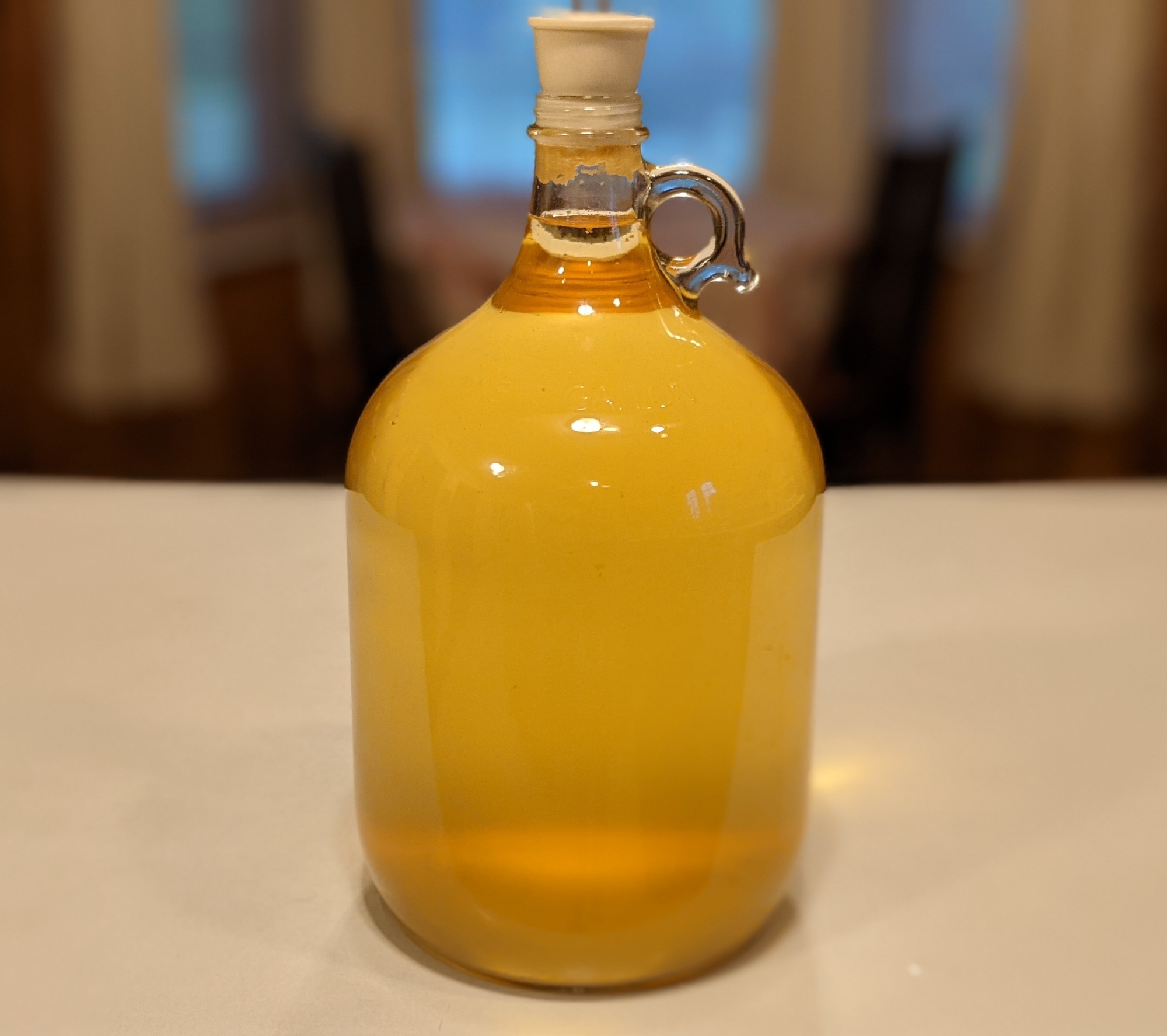
After nearly a month, the wine has continued to slowly clear to a warm golden hue. It also smells much more like wine than fruit, signaling that the yeast has been doing its work converting the sugars to alcohol. I took an educated guess at the proper amount of sugar for this recipe, so time will tell if it truly was the right amount. Will it be too sweet, with too much residual sugar? Will it be cloudy due to pectin? We’ll soon find out.

